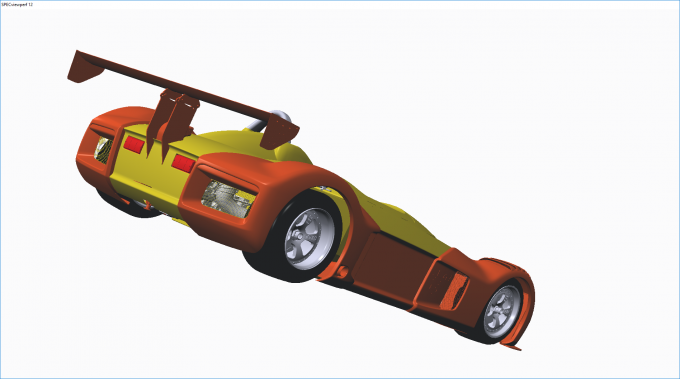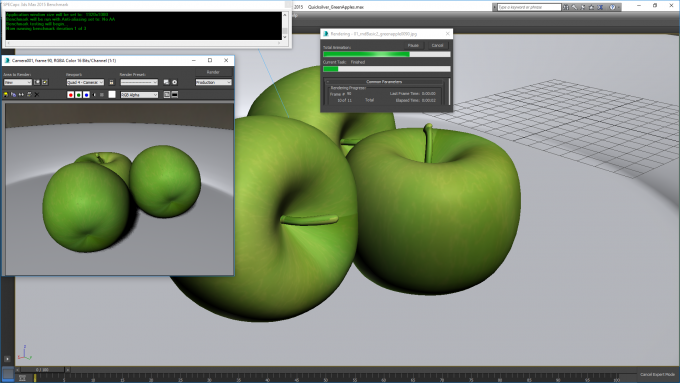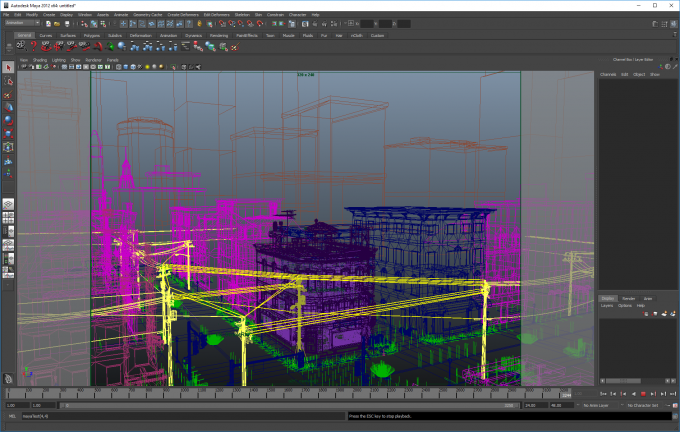- Qualcomm Launches Snapdragon 4 Gen 2 Mobile Platform
- AMD Launches Ryzen PRO 7000 Series Mobile & Desktop Platform
- Intel Launches Sleek Single-Slot Arc Pro A60 Workstation Graphics Card
- NVIDIA Announces Latest Ada Lovelace Additions: GeForce RTX 4060 Ti & RTX 4060
- Maxon Redshift With AMD Radeon GPU Rendering Support Now Available
A Look At AMD’s Radeon RX Vega 64 Workstation & Compute Performance

After months and months of anticipation, AMD’s RX Vega series has arrived. The first model out-of-the-gate is the RX Vega 64, going up against the GTX 1080 in gaming. In lieu of a look at gaming to start our Vega coverage, we decided to go the workstation route – and we’re glad we did. Prepare yourself to be decently surprised.
Page 4 – SPEC: SPECapc 3ds Max & Maya & SPECviewperf
When it comes to benchmarking hardware for serious use cases, there is no place better to look than SPEC. I’ve dubbed the folks there as “the masters of benchmarking”, as each one of SPEC’s tools are meticulously crafted by professionals to deliver results as relevant and accurate as possible – a goal shared by us at Techgage.
Three SPEC suites are used for testing here, starting with SPECviewperf, for viewport performance across nine applications. SPECapc 3ds Max 2015 and Maya 2012 finish up the page to help us gauge performance in the respective Autodesk applications. I used to include SPECwpc, but realized it’s best left for comparing one machine to another, not one component to another.
SPECviewperf 12.1
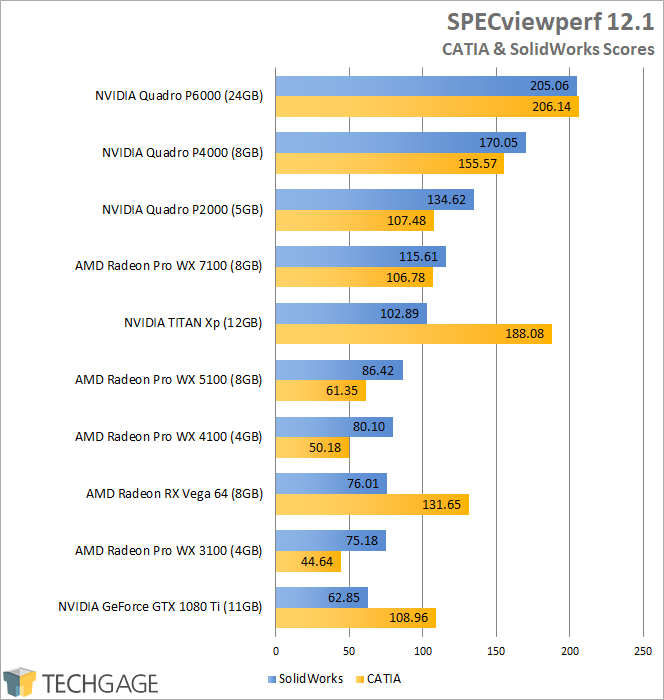
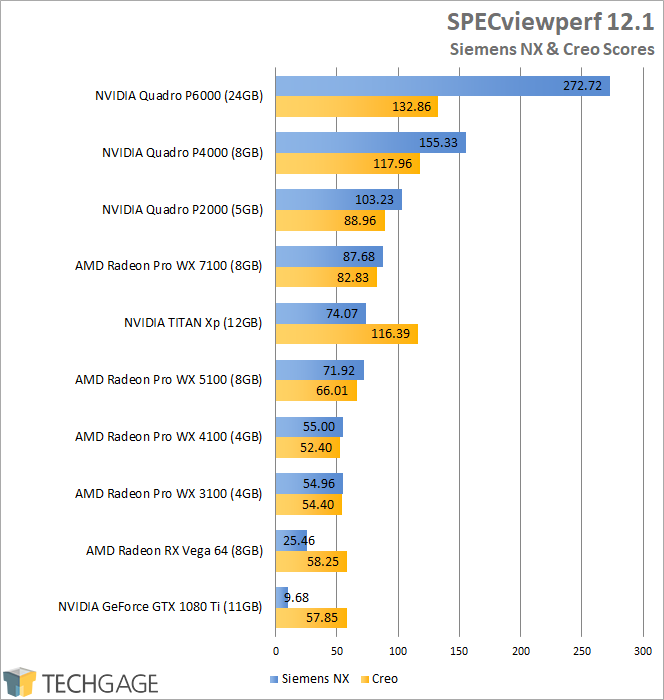
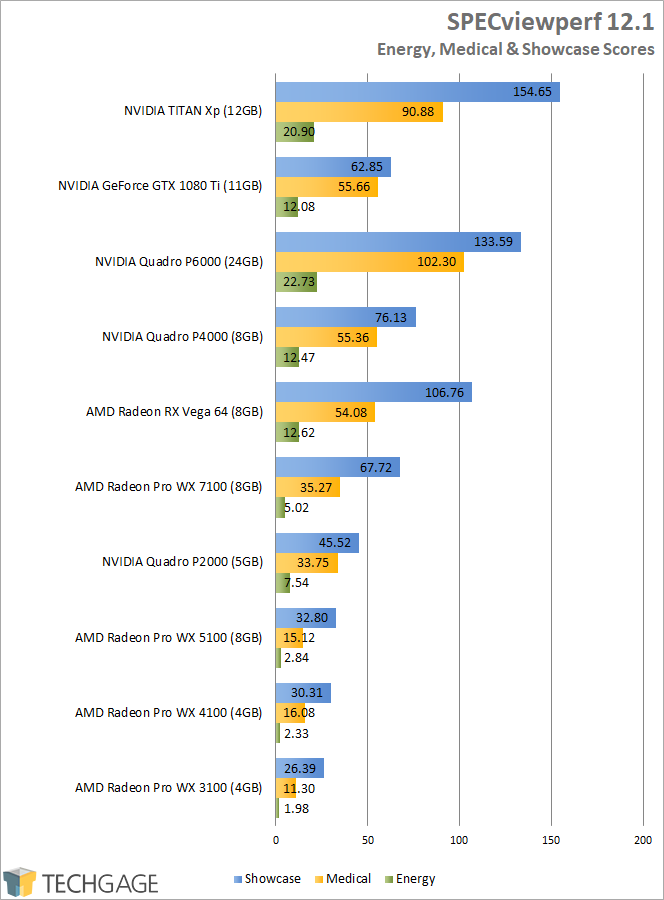
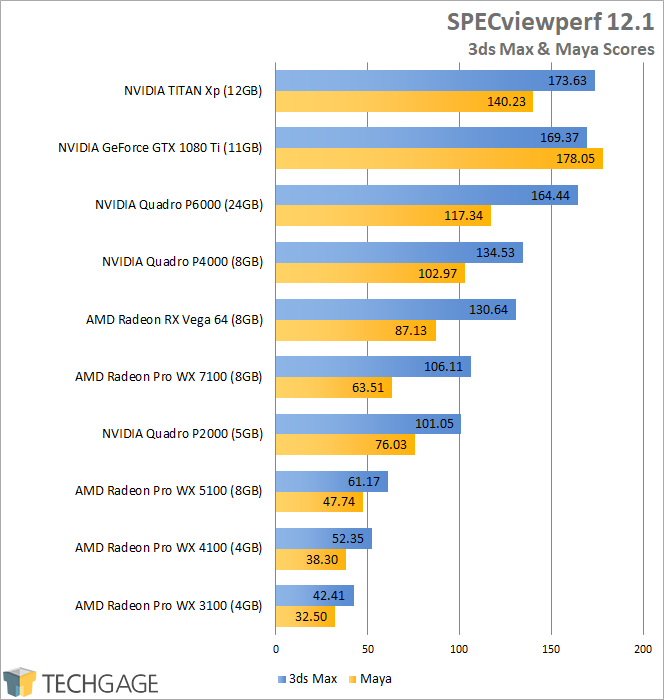
There are a lot of results to go through here, so let’s go slow. In CATIA, AMD’s Vega 64 outperformed the Quadro P2000, while it slid just in behind the ~$280 WX 4100 in SolidWorks. It’s worth noting that as far as gaming GPUs in workstation scenarios go, Vega 64 managed to beat out the GTX 1080 Ti – not bad. The same can be said about AMD’s latest top-end card in Siemens NX – a gain of 2.5x is no joke.
Vega 64’s solid compute performance carries over to energy, medical, and Showcase, performing on par with NVIDIA’s GTX 1080 Ti in the first two, and exceeding its performance in the latter. So how about 3ds Max and Maya? There, Vega 64 delivers performance that far exceeds the more expensive WX 7100, so that’s what I’d call a good thing.
SPECapc 3ds Max 2015
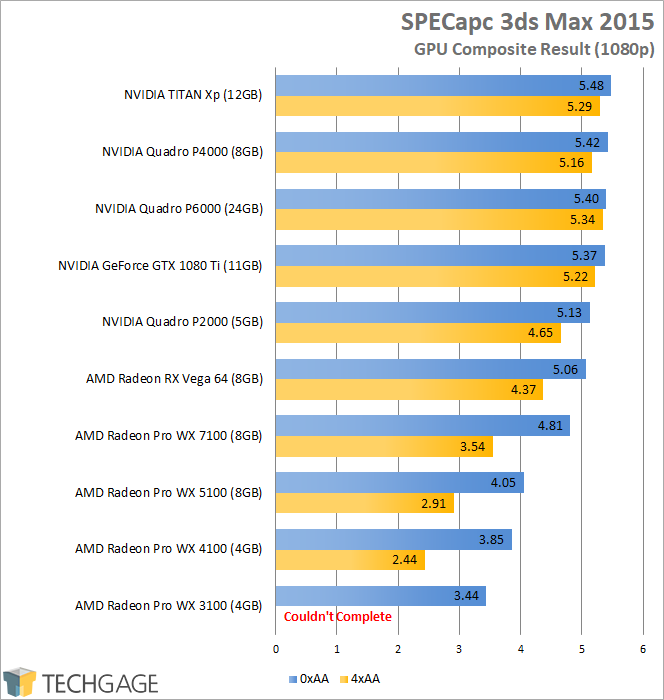
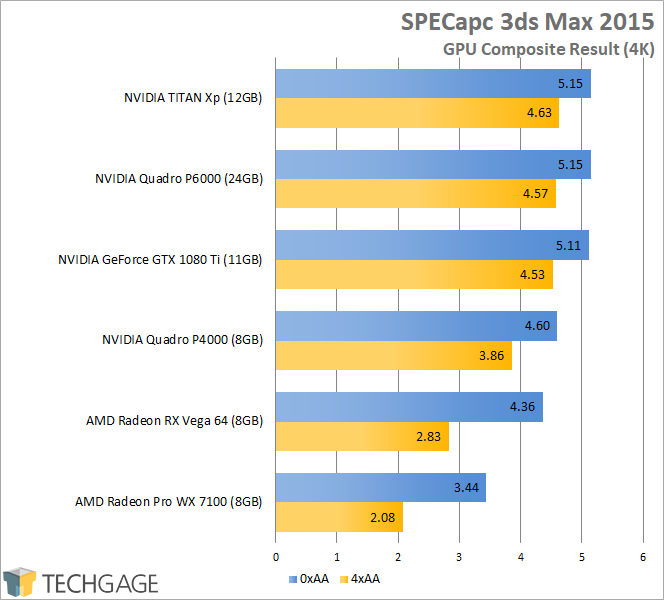
SPECviewperf showed us that the Vega 64 performed better than the WX 7100 in 3ds Max viewport performance, and according to SPECapc, overall use will see the same kind of gains. NVIDIA rules this particular roost, but Vega 64 puts up a good fight. It suffers compared to the Quadro P4000 at 4K, but that GPU costs $300 more, so it pretty much manages to scale in the end.
SPECapc Maya 2012
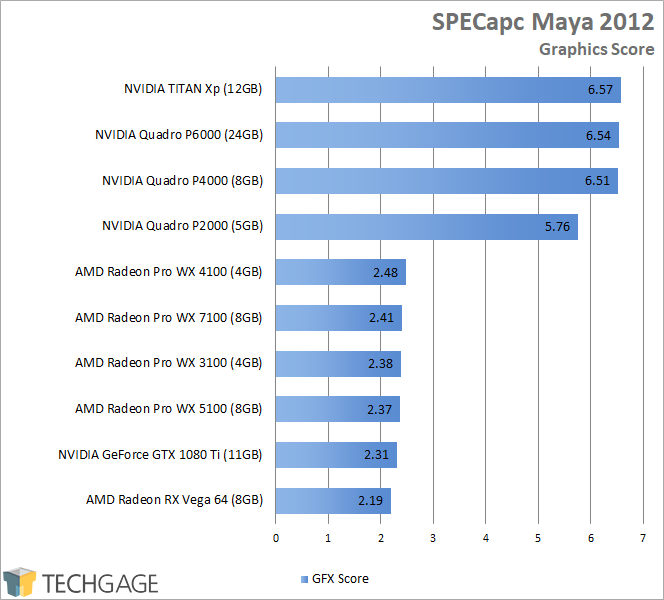
Uhh… let’s just move on, shall we?
OK, in all seriousness, I’d blame this performance loss to unoptimized drivers. I regret not having Vega FE listed here for the sake of comparison, but that is something that will be remedied in the weeks ahead.
Support our efforts! With ad revenue at an all-time low for written websites, we're relying more than ever on reader support to help us continue putting so much effort into this type of content. You can support us by becoming a Patron, or by using our Amazon shopping affiliate links listed through our articles. Thanks for your support!




